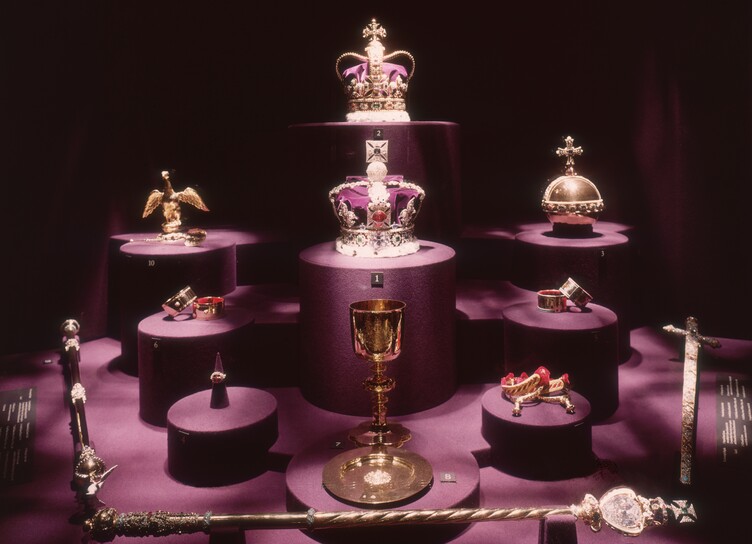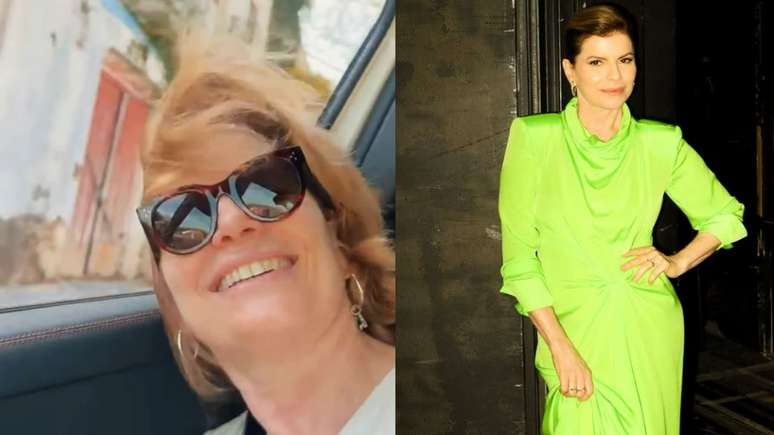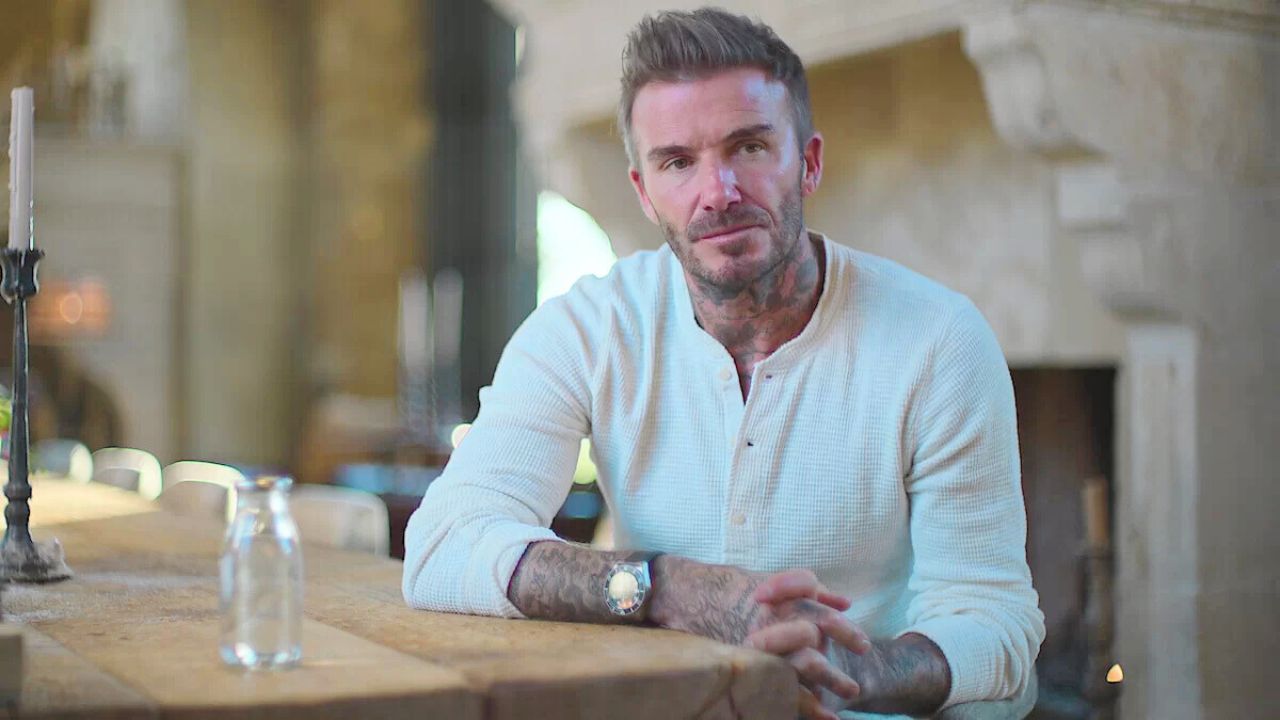______________________________
Less than two months left until the coronation of King Charles III and Queen Camilla, and preparations for her are in full swing. Visitors to the Tower of London were the first to notice this. — a fortress and a museum in which the main regalia of the British monarchs “live”. The Crown of St. Edward and the crown of Queen Mary of Teck have disappeared from their places in the exhibition. — wife of George V. Buckingham Palace later confirmed that they are being prepared for the coronation. In the weekly column HELLO! about what crown jewels we will see on May 6, 2023.
Spoon for chrismation
The main sacrament of the coronation ceremony is not at all the laying of a crown on the head of the king, but the anointing of the hands, chest and forehead of the monarch with holy oil from a special golden ampoule of 1661. It is made in the form of an eagle with spread wings and a removable head, and in its beak there is a hole from which oil is poured into a special spoon. XII century. This spoon — the oldest item in the collection of the Crown Jewels of the United Kingdom. She survived the execution of King Charles I and the destruction of the Crown Jewels in 1649 because it was bought out by Clement Kinnersley, who worked in the royal wardrobe. After the death of the monarch, he was authorized to sell his property. When Charles ascended the throne IIKinnersley returned to him the coronation spoon of the English monarchs, in the hope of royal favor.

Four symbols of power
After that, four symbols of power are handed over to the monarch: a scepter, an orb, a sword of mercy and a royal ring with sapphire and rubies. The current scepter with a cross has been used at all coronations since the accession to the throne in 1661 of Charles II. In 1910, for George V, it was decorated by Cullinan I — the largest colorless diamond in the world weighing 530.2 carats. His “ancestor” — The Cullinan diamond was found in 1905 in what is now South Africa. On January 26, 1905, Frederick Wells, the manager of the Premier Mine, was informed that a shiny stone had been seen in the wall.
Wells mined a huge diamond, which was named after the owner of the mine, Sir Thomas Cullinan. The government of the Transvaal colony bought the stone and presented it to King Edward VII. The gift symbolized the improvement in relations between Britain and South Africa after the Boer War of 1899–1902. There were cracks in the Cullinan diamond, so one large diamond could not be made from it. It had to be broken into pieces along the existing cracks. As a result, 2 very large, 7 large and 96 small diamonds with a total weight of 1063.65 carats were obtained from the Cullinan. The two largest stones were named Cullinan I and Cullinan II.


Power — it is a golden ball surmounted by a cross, which is supposed to remind the monarch that his power comes from God. And the sword of mercy — one of the ceremonial royal swords, which belonged to Edward the Confessor in the middle of the 11th century. Its broken tip symbolized royal mercy. And the rings that will be presented to King Charles and Queen Camilla were made in 1831 by the royal jewelers Rundell, Bridge & Rundell for the coronation of William IV and Queen Adelaide. These decorations were used during the accession to the throne of all sovereigns, starting with Edward VII.
The ring consists of an octagonal mixed-cut sapphire set in gold, covered with four rectangular-cut rubies and one square-cut ruby, joined end to end in a gold setting in the shape of a cross. The edging consists of fourteen cushion-shaped diamonds. Rubies — this is the cross of St. George from the flag of England, it has been customary for them to decorate the Sovereign’s ring since the 13th century. And the sapphire symbolizes the Scottish flag. During the coronation ceremony, the archbishop puts this ring on the ring finger of the sovereign, as if confirming the “marriage” between the monarch and the state, as well as on the finger of his wife.
By the way, it is sapphire, along with a diamond, that is a very popular stone for an engagement ring among members of the British royal family. From Princess Diana’s famous 12 carat sapphire engagement ring now worn by Kate Middleton to the padparadscha sapphire on the finger of the Duke of York’s daughter Princess Eugenie.

Crown of Saint Edward
The history of the ancient crown, which has already experienced two “reincarnations”, begins with a sapphire ring. This is the crown of St. Edward the Confessor, who ascended the English throne in 1042. The monarch was known for his generosity towards those in need. Traveling around his possessions, he distributed huge sums of money to the poor and disadvantaged. According to legend, one morning he was returning from one of these trips, and on the road a beggar asked him for help. The king reached into his pocket for money, but did not find a single coin there. In order not to leave the beggar with nothing, Edward took off a ring with a dark blue sapphire from his hand and presented it to the poor.
Then the monarch went about his usual business and completely forgot about this incident. But, many years later, two English pilgrims won an audience with the king, who gave Edward that same sapphire ring. They said that they went on a pilgrimage to the Holy Land, were caught in a storm and almost died while searching for a safe place to sleep. Suddenly they saw a light and an old man walking along the road, accompanied by two youths carrying candles. Learning from the pilgrims that they are from England and their king — Edward, the elder took them to where they got food and lodging for the night.
When the storm subsided, the British came to the old man to say goodbye and thank him for his kindness. He told them that many years ago, disguised as a beggar, he begged for alms from the king. Then he gave them a sapphire ring and asked them to give it to King Edward with the news that in six months he would be waiting for him in paradise. The legend says that the prediction came true: the king soon died. But the miracles didn’t end there. A few centuries later, they decided to rebury St. Edward. When experts opened the coffin, they found that his body had not decayed. This was officially recognized as a miracle, and it was believed that it was connected precisely with the ring with which the monarch was buried.
After that, people believed in the miraculous properties of this sapphire. Therefore, a 167-carat rose-cut stone was inserted into the cross on the crown used for the coronation of English kings. She received the name “The Crown of St. Edward.” In 1649, when King Charles was executed in England Iand a republic was proclaimed, Oliver Cromwell ordered the destruction of this crown, as “a symbol of a disgusting monarchy.” The gems were removed and sold, and the gold base was melted down into coins. But already in 1660 the monarchy was restored, the son of the executed king Charles II, and a new crown was made for him, similar to the medieval one, and with the same sapphire. He also crowned James II in 1685, William III in 1689, George V in 1911 and George VI in 1937.

When London was bombed during World War II, the crown jewels were smuggled into Windsor Castle. The most valuable stones were removed from their settings, sealed in a cookie tin and hidden in the basement of the castle. And on June 2, 1953, the Archbishop of Canterbury, Geoffrey Fisher, laid the crown of St. Edward on the head of the young Queen Elizabeth II. Later, the monarch recalled that it was not easy to carry such a burden on her head. The crown is made of pure gold and weighs 2.23 kilograms, therefore it is considered the heaviest in the collection of the Crown Jewels of the United Kingdom.
Its entire surface from the base to the crowning cross, which is 30 centimeters in height, is encrusted with 444 precious and semi-precious stones. We are talking about 277 pearls, as well as diamonds, sapphires, emeralds, rubies, tourmalines, white and yellow topazes, amethysts, garnets, peridots, zircons, spinels and aquamarines. It is with this crown that King Charles will be crowned on May 6 III. Much more modest is the crown that will be placed on the head of his wife Camilla. Karl’s predecessors were not stingy and ordered new coronation crowns for their wives, using precious stones in the royal treasury. But the current monarch, assuming the throne, promised that his reign would be economical, so he chose for his wife an already existing crown, made in 1911 by the jewelry company Garrard&co.
It is made in the Art Deco style and has an unusual shape for the crowns of British monarchs – eight removable semi-arches instead of the traditional two arches. Before George’s coronation V and Queen Mary of Teck, this crown was adorned with approximately 2,200 diamonds, including the famous Kohinoor, Cullinan III and Cullinan IV stones. But in 1937, these jewels were transferred to the coronation crown of George’s wife VI Elizabeth Bowes Lyon. And the crown of Mary of Teck was exhibited in the Tower with crystals instead of the legendary diamonds. Later, these stones were worn as brooches by Elizabeth II. The other day, Buckingham Palace announced that in memory of her at the time of the coronation, the Cullinans will return to the crown of Camilla. But in order to visually distinguish it from the crown of Queen Mary, four semi-arches will be removed from it.

Source: Hellomagazine
Ashley Fitzgerald is a journalist and author at Gossipify, known for her coverage of famous people and their lives. She writes about a wide range of topics, including celebrities, influencers, social media stars, and public figures. Her articles are known for their in-depth analysis and unique perspective. She is respected for her ability to keep readers up to date with the latest news and trends of the famous people.









